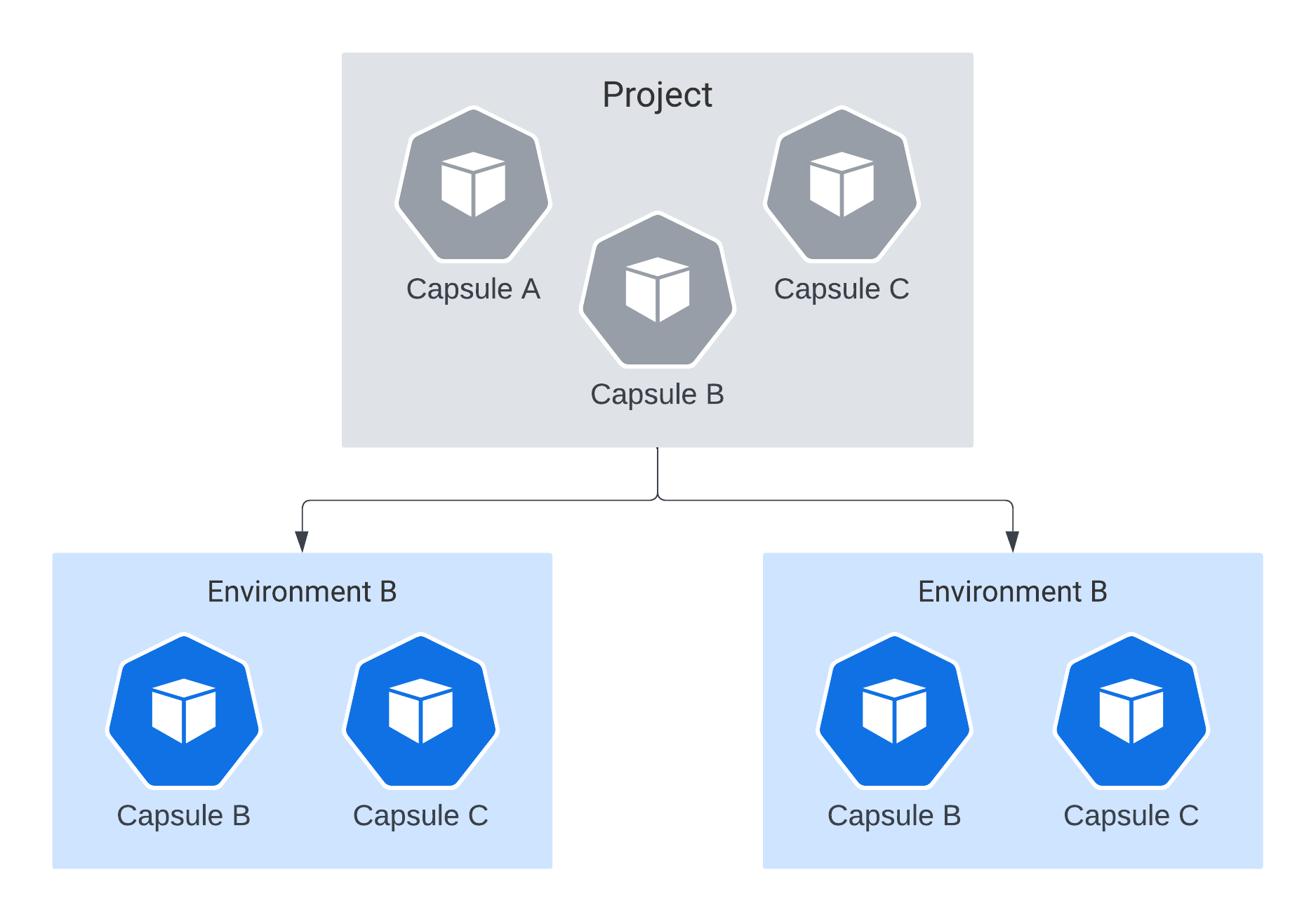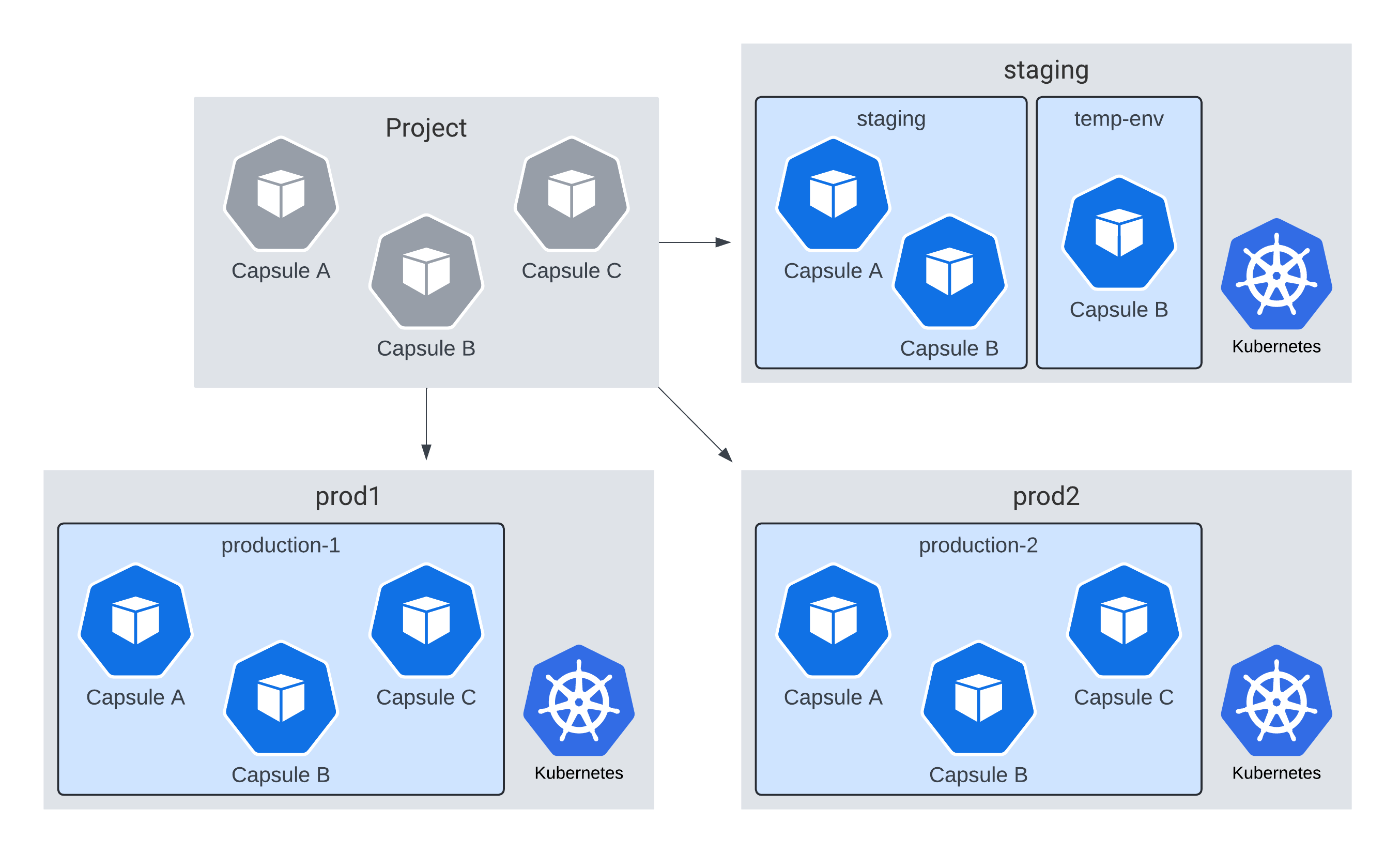Environments
The Rig Platform supports a multi-environment architecture out-of-the-box. All Capsules in the Platform are automatically deployable to all environments. That means a single Environment always contains some sub-set of all Platform Capsules.
Each environment has its own configuration of a given Capsule. Capsule A can e.g. have 10 replicas in production but only 2 in staging.


In this example, changes made to Capsules in Environment B are not reflected to Capsules in Environment A, and vice-versa.
Creating new environments
To create a new environment, use the following CLI command:
rig env create my-environment my-cluster
The newly created environment is immediately available for existing Capsules as a deployment target:
rig deploy -E my-environment my-capsule --image nginx
Custom namespace templating
By default, namespaces in the new environment will be named after the project. To change this, a custom namespace template can be provided:
rig env create my-environment my-cluster \
--namespace-template '{{ .Project.Name }}-{{ .Environment.Name }}'
This example will suffix all namespaces with the environment, allowing multiple environments in a single cluster.
the following template variables are available:
.Project.Name: The name of the project.Environment.Name: The name of the environment
Deleting environments
An environment can be deleted with a simple command;
rig env delete my-environment
However, if any Capsules is currently running in the environment, the operation will abort. Use --force to override this behavior.
Force deletion an environment will stop all running Capsules in that environment. Use this flag with care.
Ephemeral environments
Ephemeral environments are short-lived environments often used in a CI/CD context for testing purposes. Due to the flexible nature of environments, it's very straight forward to implement ephemeral environments with Rig.
The following steps are easily implemented in any CI/CD systems, such as GitHub Actions, GitLab or Circle CI:
-
First, the new environment should be created. This can be based on the pull-request ID, branch-name or something else:
rig env create "temp-env-$BRANCH_NAME" testing-cluster \
--namespace-template '{{ .Project.Name }}-{{ .Environment.Name }}' -
Next, all capsules that should be running in this environment should be deployed:
rig deploy -E "temp-env-$BRANCH_NAME" -P my-project my-capsule1 --image nginx
rig deploy -E "temp-env-$BRANCH_NAME" -P my-project my-capsule2 --image nginx -
Finally, when the environment is no longer used, e.g. when a pull-request is closed, the environment can be deleted:
rig env delete "temp-env-$BRANCH_NAME" --force
Multi-Cluster setup using Environments
Environments are associated to a single cluster, meaning Rig supports multiple clusters through environments.
Multiple environments can also exist in a single cluster (useful for ephemeral environments), meaning any mix and match of environments and clusters are possible:


Here two production-clusters each have a single environment, while a staging has a number of testing environments.
When having multiple environments in a single cluster, it's important to ensure the namespace template generated unique namespaces, preferable by having the environments as part of the namespace name.